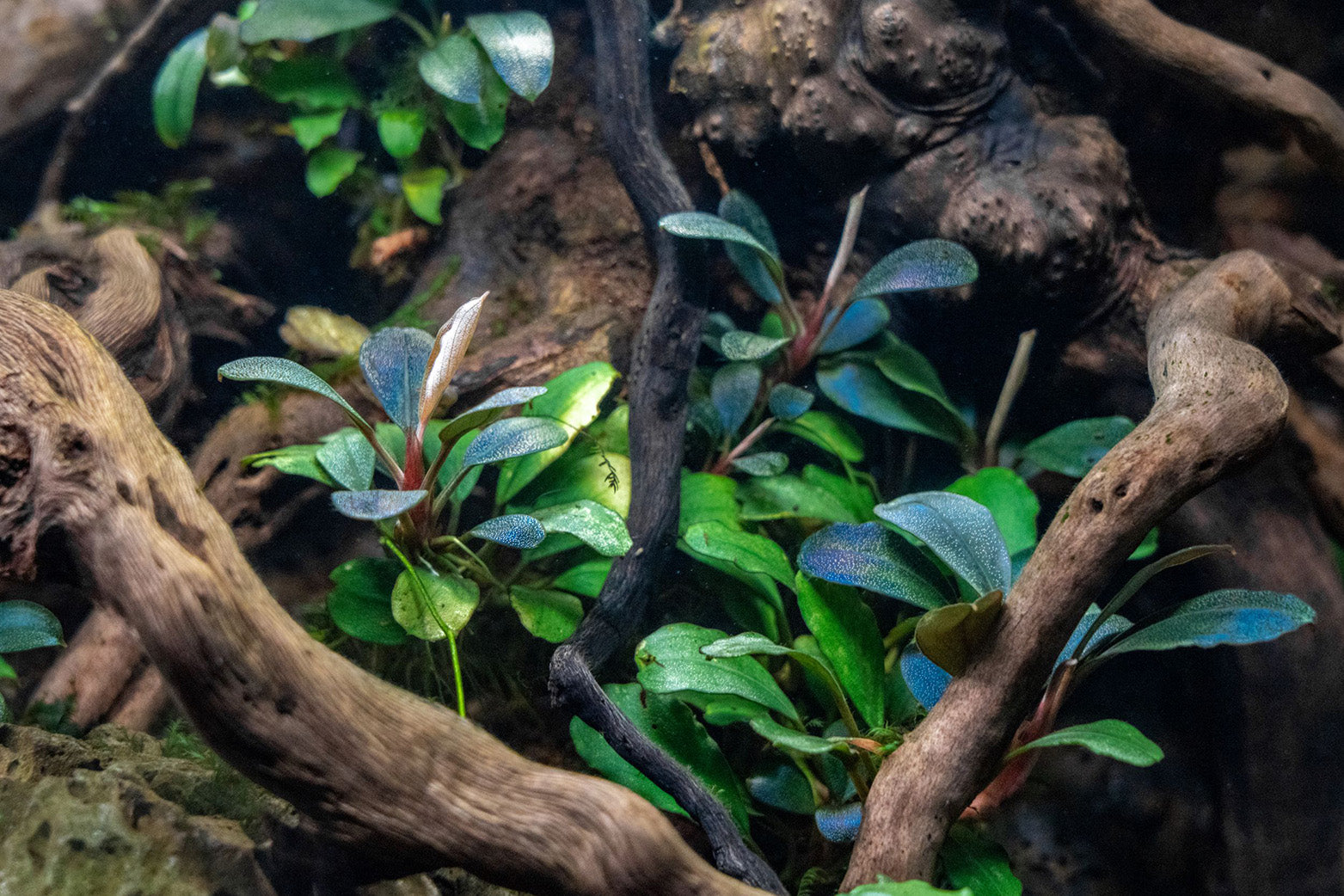
Epiphyte or Rheophyte… Which Is It?
Ever get confused with all the different trade names and scientific names that exist in the aquascaping hobby? Is it a Phyllanthus Fluitans or Red Root Floaters? Is it Neocaridina or Red Cherry Shrimp?
The answer is yes and yes. One of the most confusing parts of the hobby to beginners is how certain flora and fauna are named and referred to. Today, we’re going to provide insight on one of the terms that have been most commonly misused, and the truth as to why it happens might surprise you.
In this article, we will go in-depth with the following topics:
- Important Insight on "Epiphytes"
- What is a Rheophyte?
- What is an Epiphyte?
- So...Which Term Should I Use?

In the aquascaping hobby, the term "epiphytes" is commonly used to describe aquatic plants that have rhizomes and attach to surfaces like rocks or wood. Popular plants like Bucephalandra, Java Ferns, and Anubias are widely referred to as ‘epiphytes’ as a blanket term. But why does this happen?
Although ‘epiphytes’ is the generally accepted word when referring to these aquarium plants, it is technically inaccurate. In fact, the common names (or "trade names") of many flora and fauna in the hobby are not scientifically accurate. In this particular example, epiphytes was a legacy term used to describe plants like Bucephalandra and Java Fern (mainly due to hobbyists not clearly understanding taxonomy.) As the hobby has progressed and more discoveries are made, demand for a more accurate understanding of nomenclature for plants and livestock has increased.
That being said… Scientifically speaking, aquarium plants like Bucephalandra, Java Ferns, and Anubias are closer to “rheophytes” as opposed to true epiphytes.
What is a Rheophyte?
A rheophyte is an aquatic plant that lives in environments with fast-flowing currents, such as rivers or streams, where few other living organisms can survive. Many popular aquarium plant species such as Buce, Anubias, Java Fern (Microsorum Pteropus), Schismatoglottis, and Bolbitis are found in tropical jungle environments with flowing water.
Popular rheophytes used in planted aquariums, such as Bucephalandra, are considered “facultative rheophytes,” which means that in their natural environments, they partially live in flowing water dependent on the season. In high water season, facultative rheophytes are submerged in the water with their roots firmly attached to rocks or wood. In low water season, they will grow emersed, or above water. These types of rheophytes thrive in an aquarium because they are more accustomed to frequent changes in environmental factors such as water depth and flow changes.
On the other hand, “obligate rheophytes” grow in very fast-flowing waters at all times and require this for good health. These types of rheophytes would arguably not survive in the regular planted aquarium.
Rheophytes are usually slow-growing and not demanding when it comes to care. They often do not require high light or abundant nutrients to survive. However, providing rheophytes with ample lighting, nutrients, and CO2 will always improve their growth in an aquarium.

What is an Epiphyte?
An epiphyte, also considered an air plant, is an organism that grows on the surface of a plant or other object (a “host”). They are usually non-aquatic, flowering plants found in tropical environments where they rely on rainwater and water vapor from the air to obtain nutrients through their roots and leaves. Most epiphytes are not considered parasitic because they grow on other plants for physical support and do not necessarily affect the host negatively.
There are two types of epiphytes: terrestrial and marine. In general, terrestrial epiphyte species often make great houseplants due to their minimal care requirements. In the wild, they can have a positive effect on the microenvironment of their host because they hold water in the canopy and decrease water input to the soil.
On the other hand, marine epiphytes are considered detrimental to the host plants they grow on because they can block access to light and nutrients resulting in damage or death, especially with seagrasses. Marine epiphytes include species of algae, bacteria, fungi, and more.
Some common epiphytic plants used in the terrarium and aquarium hobbies are mosses, liverworts, and ferns.

So… Which Term Should I Use?
At Team Buce Plant, we strive to consistently provide hobbyists of all experience levels with the most up-to-date information and knowledge we have regarding the aquascaping hobby. Hopefully, this article gives you some useful information about these aquatic plants. Still, even though we understand that “rheophyte” is arguably the correct term, we will never correct you if you use the word “epiphyte!”
Most aquarium hobbyists still use the word “epiphyte” instead of “rheophyte” to describe aquarium plants that can be attached to rocks, driftwood, or other aquarium decorations. That being said, you will see us continue to use both terms depending on the situation to avoid miscommunication and confusion, especially amongst beginners in the hobby.
Tell us - Was this article helpful? Please leave a comment below!
If you have any questions regarding this article, please DM us on Instagram, Facebook, or email support@buceplant.com so we can assist you - @buceplant





Comments
Leave a comment